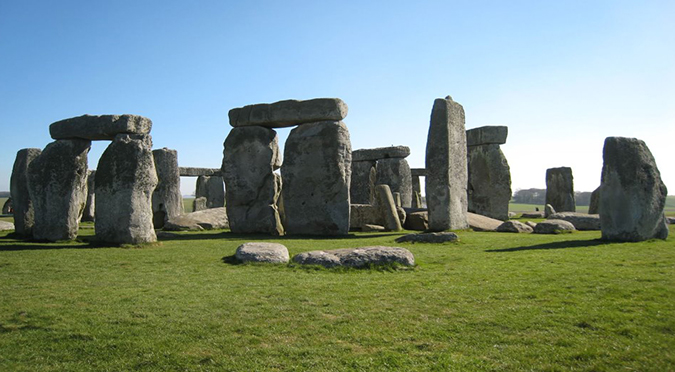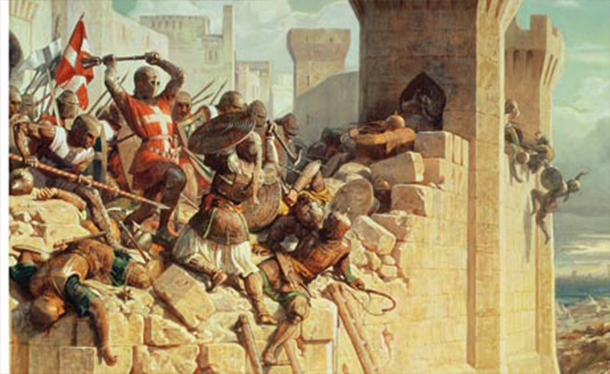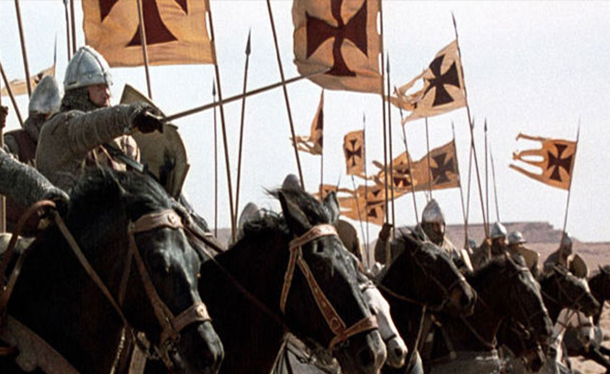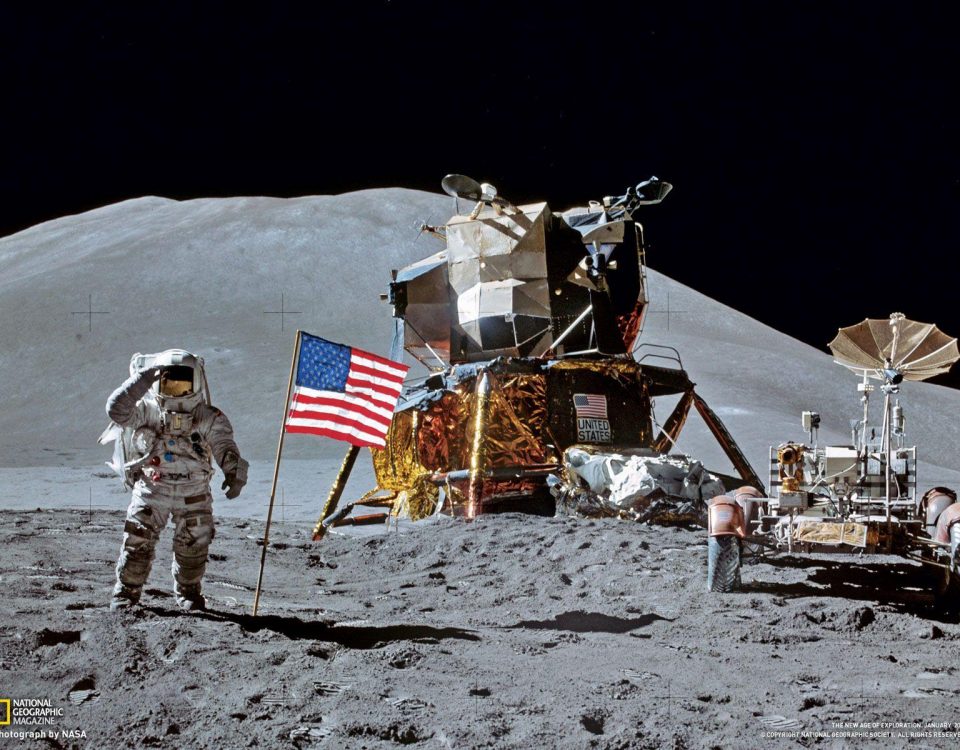
8 More Wonders of the World!?
November 18, 2013
THE CRUSADES – Part Two
December 17, 2013CONTENT WARNING: the following articles may contain some disturbing content including religious commentary, mild language, crude humor, descriptions of medieval war, and irreverent interpretations of sacred texts. *Note: This article was originally written in 2013.
The Christian Crusades (Numbers 1-9) : 1095-1272 C.E.
PART ONE – The Cause of the Cross
*Disclaimer: Comparing the Crusading Christian Knights of the Middle Ages to modern Catholicism would be as wrong as comparing Muslim Americans to radical extremists, or as unfair as comparing Katy Perry to a Philly Cheese Steak. The following events described herein took place a thousand years ago, and do not in any way reflect the current political stances of any religious denominations. These accounts are however based on factual events during the Medieval Period as chronicled by scholars from both sides of the story.
There is no such thing as a spiritual war. That said, the Crusades were a series of (failed) ‘Holy’ Wars, on an epic scale, that accomplished next to nothing, except leading to more problems in an already tumultuous region…
People have been murdering one another in the name of religion since the beginning of time (sometimes justified as ritualistic sacrifice, or sacred warfare to claim a ‘Holy’ land from ‘demonic heathens’). During the height of the Middle Ages, so-called Christian Crusades took the dark side of religious fanaticism (and hypocrisy) to a whole new level of human slaughter, in the name of God. (BTW: this is a good example of what it technically means to take the Lord’s name in vain.)

The Crusades consisted of numerous conflicts fought over Jerusalem, a Holy City with religious and historical significance to all 3 mainstream forms of monotheism, the Abrahamic traditions of: Judaism, Christianity, and Islam. The Crusades dragged out over two centuries: A never-ending series of medieval military campaigns in the name of the church that spanned the 11th-13th centuries.
 Seriously though, there were more sequels and spin-offs to the First Crusade than Mega Man games, shitty shark movie remakes, Bond sequels, or any horror movie franchise that just didn’t know when to die. The Crusades dragged out even longer than the Hundred Years War that followed it! And it sucked worse than an industrial vacuum at the center of a black hole.
Seriously though, there were more sequels and spin-offs to the First Crusade than Mega Man games, shitty shark movie remakes, Bond sequels, or any horror movie franchise that just didn’t know when to die. The Crusades dragged out even longer than the Hundred Years War that followed it! And it sucked worse than an industrial vacuum at the center of a black hole.
Steven Runciman states it best: “The Crusades were a tragic and destructive episode… There was so much courage and so little honor, so much devotion and so little understanding. High ideals were besmirched by cruelty and greed, enterprise and endurance by a blind and narrow self-righteousness; and the Holy War itself was nothing more than a long act of intolerance in the name of God.”
Now before we get to this Medieval throw down let’s meet our players –
- In corner Number One: Christianity (more specifically the Roman Catholic Church of the Holy Roman Empire) – a 2,000 year old religion based on the teachings of a Rabbi / Carpenter / wandering after-life-insurance salesman often referred to as Jesus (Yeshua), an Apostle named Paul, and the biblical cannon established by Emperor Constantine at the Council of Nicaea (325 CE).
- In corner Number Two: the defenders of Islam – followers of the Arabian prophet Muhammad, Allah, and the Holy Qur’an.
- And in the middle of the ring: the Jews aka – the Wandering Nomads of Abraham.
Let’s Get Ready to RUMBLE!!! …but first…
A Brief History of Islam
During the 6th Century (CE), a prophet emerged from Saudi Arabia: Muhammad.
 At the time the people of the region were in a constant state of chaos as warring tribes vied for power in a harsh desert climate. The story of Muhammad begins in Mecca with the Angel Gabrielle appearing before the Prophet with the message of Islam: the way of peace. He makes it his mission in life to end the cycle of violence and unite his people through the word of God (aka Allah, Creator of the Universe).
At the time the people of the region were in a constant state of chaos as warring tribes vied for power in a harsh desert climate. The story of Muhammad begins in Mecca with the Angel Gabrielle appearing before the Prophet with the message of Islam: the way of peace. He makes it his mission in life to end the cycle of violence and unite his people through the word of God (aka Allah, Creator of the Universe).
Muhammad’s followers believed that the Qur’an was the most accurate interpretation of God’s message to mankind, and that Muhammad was the last in a line of prophets including Abraham, Moses, and Jesus. Islam isn’t just a set of beliefs, it’s a way of life, much like other orthodoxy Judaism, and those Christians who actually follow the teachings of Christ, and sometimes followers take passages out of context and miss the meaning entirely, something that followers of all three religions are guilty of (more on that to come).
The death of Muhammad, much like Alexander the Great, was immediately followed by a series of violent disputes over the true successor to the kingdom. The Khalifas, like the Roman Emperors were often corrupt and greedy rulers who gained their positions through treachery an deceit, leading to a series of military engagements. Ironically Muhammad’s legacy caused further schisms between the people of the Middle East for centuries to come.
 The fact of the matter is, if it wasn’t for the Arab Nations we might still be living in the dark ages today. The Muslim scholars, scientists, astronomers, inventors, mathematicians, and traders kept the lost knowledge of Alexandria alive.
The fact of the matter is, if it wasn’t for the Arab Nations we might still be living in the dark ages today. The Muslim scholars, scientists, astronomers, inventors, mathematicians, and traders kept the lost knowledge of Alexandria alive.
Long after the Greek and Egyptian temples had been torn down, and ‘heretical’ scrolls burned, the Muslim culture preserved the legacy of the philosophers of old (Socrates, Plato, Aristotle, etc), and expanded upon their works throughout the Medieval Period. Astronomers and mathematicians like Al-Khwarizmi and Ibn Al-Haitham enriched humankind’s understanding of the natural world.
They were single-handedly responsible for the Italian Renaissance. In fact the Scientific Method (the very same one we still use today) was invented during the early years of Muslim philosophy. The number system we use today is the same exact one that was created in the deserts of the Middle East over a thousand years ago! Among their many contributions to modern civilization: the advent of Calculus, Geometry, and Algebraic equations (those bastards!).
*Quick Side Note: more Biblical-related history concerning Judeo-Christian traditions have already been covered elsewhere on the site. (see previous articles: History of the Holidays, Creation Myths, Gilgamesh, Ramses II, Emperor Nero, and the Council of Nicaea)
THE Church declares WAR
 By the time of the Crusades there were three main denominations within Islam back then: the Sunni, the Shia, and the Kharajite, each of which fought one another for control over the region. On the other hand, there was only one ‘True Faith’ in Christianity at the time: The Catholic Church. Although it’s powerful political influence was split between the Pope in Rome, and Constantinople in the East.
By the time of the Crusades there were three main denominations within Islam back then: the Sunni, the Shia, and the Kharajite, each of which fought one another for control over the region. On the other hand, there was only one ‘True Faith’ in Christianity at the time: The Catholic Church. Although it’s powerful political influence was split between the Pope in Rome, and Constantinople in the East.
Since the Protestant Reformation of Martin Luther (1517-1648) there have been a few other versions of the ‘True Faith’ (Amish, Agnostics, Anglicans, Baptists, Calvinists, Episcopalians, Greek-Orthodox, Jehovah Witnesses, Lutherans, Methodists, Mormons, Non-denominational, Presbyterians, Quakers, Seventh Day Adventists, and of course Unitarian-Universalists some of whom also label themselves as Christians.)
Of course, just like all religions there are always fanatical fundamentalists, and fringe groups with ulterior motives who completely misinterpret the moralistic message at hand, and utilize people’s beliefs for political gain. Speaking of religious leaders using religious doctrine for their own nefarious purposes, that’s exactly what the Catholic Popes did throughout the medieval period.
At a time when church and state were inseparable, the Pope’s of the time were more political than spiritual entities. As Muslim influence spread across Eastern Europe, the Catholic Church started to sweat. So in response to the perceived threat, the Pope came up with a sensible solution: Holy War – Perhaps the single best example of why a combination of Church and State is a very bad idea.
At the center of this conflict:
Jerusalem.
 During its exhaustively long and bloody history, Jerusalem has been destroyed twice, besieged 23 times, attacked 52 times, and captured 44 times. It’s central to the traditions of Jews, Muslims, and Christians. Ironically, at the time of the First Crusade, all three got along in harmony, they lived and worshipped together within its walls in peace… that is until the Crusaders came to town. The Crusades were the catalyst for a millennium long schism between Eastern and Western religions with the Israeli-Palestinian conflict at its epicenter.
During its exhaustively long and bloody history, Jerusalem has been destroyed twice, besieged 23 times, attacked 52 times, and captured 44 times. It’s central to the traditions of Jews, Muslims, and Christians. Ironically, at the time of the First Crusade, all three got along in harmony, they lived and worshipped together within its walls in peace… that is until the Crusaders came to town. The Crusades were the catalyst for a millennium long schism between Eastern and Western religions with the Israeli-Palestinian conflict at its epicenter.
Palestine, the desert lands between the Mediterranean Sea and Jordan River, has a long and tumultuous history, with spiritual significance dating back to one of the earliest human communities: the Biblical city of Jericho. The Kingdom of Israel was established by the Hebrews after the Exodus of Egypt with the Holy City of Jerusalem as their capitol. However, they were soon conquered by the Neo-Assyrian Empire.
 Jerusalem specifically has more convoluted history than any other region in the world. According to Biblical scripture, the city of Jerusalem was founded by King David. The Babylonian King Nebuchadnezzar II (of Biblical fame) is credited for destroying Jerusalem and laying waste to Solomon’s Temple during a conflict with Egypt, in 586 BCE.
Jerusalem specifically has more convoluted history than any other region in the world. According to Biblical scripture, the city of Jerusalem was founded by King David. The Babylonian King Nebuchadnezzar II (of Biblical fame) is credited for destroying Jerusalem and laying waste to Solomon’s Temple during a conflict with Egypt, in 586 BCE.
Then the Persian Empire under Cyrus the Great conquered Palestine, and invited the Jews to come back and rebuild their temple. Then Alexander the Great of Macedonia absorbed the region. Following this, the Maccabees revolted against Antiochus the Great (152 BCE). Next, in 63 BCE, Pompey the Great of the Roman Republic moved in and fought off the Parthians. The Roman Senate installed Herod (the Great) as a Jewish Client King over the province.
I guess the rulers of Palestine are kinda like frosted flakes: They’re GRRRREEEAAAT!

Following the crucifixion of Jesus (in Jerusalem), the Roman Empire brutally put down a Jewish uprising in 70 CE. As a result Jerusalem was, once again, leveled. When the ‘Christian’ Emperor Constantine rose to power and established the ‘Holy’ Roman Empire (along with Biblical cannon at The Council of Nicaea 325 CE), he banned Jews from entering the city of Jerusalem.
A few hundred years later, the Prophet of Allah, Muhammad, united the Arab Nations under a single banner prior to his ‘ascension to heaven’. In 636 CE, at the Battle of Yarmouk, the Muslims managed to overthrow the occupation of the Byzantine Empire, effectively ending Christian dominance in Syria. The result was rapid Islamic expansion throughout the region. As a result of this long and convoluted history, Jerusalem is the epicenter of monotheism. More specifically, Mount Moriah, or the Temple Mount, has profound spiritual significance for all three major religions:
- For the Jews, it’s the place where Solomon built the First Temple, and supposedly the place where God allegedly told Abraham to kill his son Isaac, because he said so (extreme reverse psychology?). It’s also where the Temple was rebuilt, and then torn down again.
- For Muslims, it’s the site of the current structure, the Al-Aqsa Mosque, built over the ruins of the Second Temple. The Dome of the Rock, believed to be the place where Muhammad visited heaven. The actual ‘rock’ under the dome in question was in fact a meteorite often associated with Muhammad’s ascension to heaven, and is still on display today within the domed building.
- For Christians, the Temple Mount is prophesized as the place where the Messiah will return at the End Times to establish the Kingdom of Heaven on Earth.

Today Jerusalem is under the Jewish-nation of Israel, the continued cause for much of the controversy and conflicts in Israeli-Palestine relations. It can be argued that it can all be traced back to the Failed Holy Wars known as the Christian Crusades. Prior to the Crusades, Muslims, Jew, and Christian pilgrims alike were all welcome within the walls of the Holy City. They lived, traded, and prayed in peace together.
Well, that is of course until the Crusaders came to town…
So, who started it all?
 Pope Urban II.
Pope Urban II.
The Pope called for an armed military operation to seize Jerusalem from perceived Muslim control. The Council of Clermont was formed when the Byzantine Emperor, Alexius, requested aid in an ongoing conflict with the Seljuk Turks. Turns out a few isolated incidents of pilgrim harassment by camel-riding thieves was all the excuse he needed.
In 1095, Pope Urban II made a grand announcement to a roaring crowd at Clermont. “Take this sword and these arms in the name of the Father, the Son and the Holy Ghost! May they and it serve you in this good cause, but never may they shed innocent blood!”
During Pope Urban’s motivating speech, he essentially claimed that to fight in the Crusades was a one way ticket to Heaven. “Undertake this journey for the remission of your sins, with the assurance of the imperishable glory of the kingdom of heaven.” At a time when mostly everything was guaranteed to send you straight to hell this was a welcome opportunity. And for many this was an opportunity to get away from the living hell that was Europe during the height of the Dark Ages.
The Crusader movement affected every aspect of Medieval Europe. Everyone that wasn’t physically involved in the armed pilgrimage was either directly related to someone who was, or acquainted with someone who was. In the early years there was unparalleled support for the movement throughout Europe, uniting many bitter rivals against a common enemy. Turns out the word ‘enemy’ was a very broad and loosely defined term which would frequently be applied to Muslims, Jews, Pagans, Atheists, and eventually even other Christians?!
To be continued… in PART TWO – Crusades One AND Two!!
Erik Slader
Hope you enjoyed this edition of “Epik Fails!”, if you have any comments, questions, concerns, or suggestions let me know in the comments below! Also, be sure to ‘Like’ EPiK FAILs on Facebook, or Follow on Twitter, and SHARE IT with your friends!
—Sources:
“The Crusades, Christianity, and Islam” by: Jonathan Riley-Smith
 “History’s Greatest Defeats: THE CRUSADES – Failed Holy Wars” by: Cherese Cartlidge
“History’s Greatest Defeats: THE CRUSADES – Failed Holy Wars” by: Cherese Cartlidge
“The Complete Idiot’s Guide to: The Crusades” by: Paul L. Williams, Ph.D.
“Warriors of God: Richard the Lionheart and Saladin in the Third Crusade” by: James Reston, Jr.
“A History of the Crusades” by: Steven Runciman
“The Hinge Factor” by Erik Durschmied
“Brassey’s Book of Military Blunders” by Geoffrey Regan
“The Little Book of Big F*#k Ups” by Ken and Katie Lytle
“The Book of Ancient Bastards” by Brian Thornton
“Crusade” (graphic novel series) By Jean Dufaux and Philippe Xavier
http://www.issaservices.com/islam/historyofislam.html
http://www.historylearningsite.co.uk/childrens_crusade.htm
http://www.medievality.com/second-crusade.html
http://www.umich.edu/~eng415/timeline/summaries/second_crusade.htm
http://www.answering-islam.org/Nehls/tt1/tt3.html
“The Crusades: The Crescent and the Cross” (2005 – documentary)
“Kingdom of Heaven” (2005) – Directed by: Ridley Scott. Starring: Orlando Bloom and Eva Green.






15 Comments
Funny, my blog just featured a site bitching on Pope Francis’s achievement on becoming TIME’s Person of the Year…but compared to Pope Urban I must say he’s not doing a bad job at all;)
Oh just wait, shit gets soooo much worse in part two – where I go into the gory details of the wholesal3 slaughter fest
Can’t wait!
Yeah…. This one guy responded to me with a racist rant about how Muslims are the offspring of Satan or some shit, got a good laugh out of it right before deleting. I almostargued it out with im before realizing it was not worth the effort.
[…] Previously on EPiK FAILs – I explained a little bit of the convoluted back-story leading to The First Crusade: the history of Islam, Jerusalem, the Byzantine Empire, and the Catholic Pope’s call for a Holy War against ‘non-believers’. (Click for PART ONE – The Cause of the Cross) […]
[…] Empire, and the Catholic Pope’s call for a Holy War against ‘non-believers’. (Click for PART ONE – The Cause of the Cross) I then recounted the gory details that played out during the events of the First and Second […]
[…] was also Pope Urban II’s justification behind a little pilgrimage to Jerusalem known as THE CRUSADES! (A series of failed military campaigns in the name of Christ, sparking a conflict that would rage […]
[…] back-story leading to the Pope’s call for a Holy War against Jerusalem (Click for PART ONE – The Cause of the Cross), and the events of the first couple Crusades (PART TWO – Crusades One AND Two!), I then […]
[…] was also Pope Urban II’s justification behind a little pilgrimage to Jerusalem known as THE CRUSADES! (A series of failed military campaigns in the name of Christ, sparking a conflict that would rage […]
[…] THE CRUSADES (Part One: The Cause of the Cross) […]
[…] THE CRUSADES […]
[…] THE CRUSADES – Part One (of Four) […]
[…] This also sometimes includes figuring out if it should be a two-parter or more. A good example is The Crusades piece, which started out as a single article and mutated into a massive four-part […]
The essence of the Crusades was to achieve a specific goal. They often had both a political and religious justification, which determined their direction.
[…] One of the most absurd things about these particularly ludicrous Witch Trials was that those accused were not even ‘pagans’ per say. Not that there’s anything wrong with pagans. In fact, the term has been misused for centuries as an insult. Throughout history Christians have used the term to refer to anyone who isn’t a Christian: such as Muslims, Jews, Hindus, atheists, or even used to refer to those who didn’t believe in the exact same type of Christianity they did. (see: The Crusades – all Nine of them!) […]